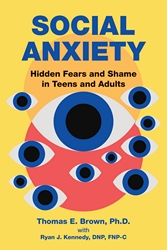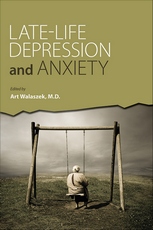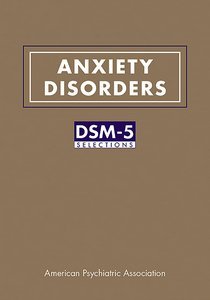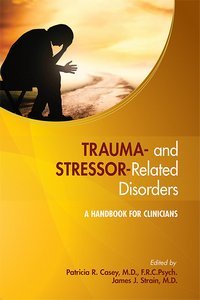Stress-Induced and Fear Circuitry Disorders
Refining the Research Agenda for DSM-V
View Pricing
Description
As disorders in which stress or fear play major roles present an increasing need for psychiatric care around the world, this volume summarizes current research to determine whether a specific group of stress-induced and fear-based disorders form a distinct syndrome independent from other anxiety disorders such as obsessive-compulsive disorder or generalized anxiety. Intended to suggest DSM-V revisions regarding the classification of these disorders, Stress-Induced and Fear Circuitry Disorders reflects findings that may lead to more refined treatments for these specific anxiety disorders based on a better understanding of the biological and environmental factors that contribute to their development and symptoms.
Thirty contributors, all international authorities on this group of mental illnesses, clarify how these disorders develop and what factors contribute to symptomatology. Focusing on posttraumatic stress disorder, panic disorder and agoraphobia, social phobias, and specific phobia, the authors explore the possibility of linking the classification and etiology of these conditions by showing that they may be closely related in terms of brain pathophysiology. In addition to assessing the stability of disorders across patient lifespans and determining whether they form a cohesive and distinct group, the authors examine shared etiologies and biopsychosocial correlates, as well as aspects unique to each disorder. Among the book's specific insights:
- How minority populations, particularly African Americans, are differentially affected by these disorders.
- The neuronal mechanisms of normal fear and anxiety, including how changes in the genetics of the serotonin system can increase the risk of anxiety.
- The role of cognition in symptom presentation and treatment, revealing cognitive biases that favor the processing of threat-related information.
- The contribution of stress and psychosocial factors, such as peer victimization and childhood sexual abuse.
- The use of neuroimaging to analyze neural structure and function for each of the four disorder groups.
- How neurochemistry and neuroendocrine markers may aid in classification of anxiety disorders.
- The contribution of substance abuse to the pathophysiology of these disorders.
Given the importance of changes to DSM for professional education and public health, this book offers important new ways of thinking about stress-induced and fear-based disorders. It not only allows researchers to more accurately assess their diagnostic classifications, but also can help clinicians more effectively communicate with patients regarding the nature of their illness and the importance of adhering to treatment regimens.
Contents
- CONTRIBUTORS
- DISCLOSURE STATEMENT
- PREFACE
- PART 1: Stress-Induced and Fear Circuitry Disorders
- Chapter 1. Posttraumatic Stress Disorder
- Chapter 2. Panic Disorder
- Chapter 3. Social Phobia SOCIAL PHOBIA
- Chapter 4. Specific Phobias SPECIFIC PHOBIAS
- PART 2: Course and Classification
- Chapter 5. Continuity and Etiology of Anxiety Disorders: Are They Stable Across the Life Course?
- Chapter 6. Stress-Induced And Fear Circuity Anxiety Disorders: Are They A Distinct Group?
- PART 3: Special Topics
- Chapter 7. Anxiety Disorders In African Americans And Other Ethnic Minorities
- Chapter 8. The Genetic Basis Of Anxiety Disorders
- Chapter 9. Serotonin, Sensitive Periods, And Anxiety
- Chapter 10. Role Of Cognition In Stress-Induced And Fear Circuity Disorders
- Chapter 11. Stress And Psychosocial Factors In Onset Of Fear Circuity Disorders
- Chapter 12. Neuroimaging And Neuroanatomy Of Stress-Induced And Fear Circuity Disorders
- Chapter 13. Role Of Neurochemical And Neuroendocrine Markers Of Fear In Classification Of Anxiety Disorders
- Chapter 14. Anxiety And Substance Abuse: Implications For Pathophysiology And DSM-V
- Chapter 15. Concluding Remarks
- INDEX
Contributors
- Mark D. Alter, M.D., Ph.D.
Gavin Andrews, M.D.
Carlos Blanco, M.D., Ph.D.
Susan Bogels, Ph.D
Timothy A. Brown, Ph.D.
Richard A. Bryant, Ph.D.
Shawn P. Cahill, Ph.D.
Dennis S. Charney, M.D.
Wayne C. Drevets, M.D.
Thalia C. Eley, Ph.D.
Paul M.G. Emmelkamp, Ph.D.
Carlo Faravelli, M.D.
Edna B. Foa, Ph.D.
Matthew J. Friedman, M.D.
Toshi A. Furukawa, M.D., Ph.D.
Abby J. Fyer, M.D.
HonaLee Harrington, B.A.
Rene Hen, Ph.D.
Jonathan D. Huppert, Ph.D.
Elie G. Karam, M.D.
William B. Lawson, M.D., Ph.D.
Peter McEvoy, Ph.D.
Richard J. McNally, Ph.D.
Edward V. Nunes, M.D.
Daniel S. Pine, M.D.
Richie Poulton, Ph.D.
Ronald M. Rapee, Ph.D.
Scott L. Rauch, M.D.
Darrel A. Regier, M.D., M.P.H.
Paul J. Sirovatka, M.S. (1947–2007)
Tim Slade, Ph.D.
Murray B. Stein, M.D., FRCPC, M.P.H.
Elisabetta Truglia, M.D.
Hans-Ulrich Wittchen, Ph.D.
Rachel Yehuda, Ph.D.
About the Authors
Gavin Andrews, M.D., is a Professor of Psychiatry in the School of Psychiatry at University of New South Wales in Sydney, Australia.
Dennis S. Charney, M.D., is Dean of the Mount Sinai School of Medicine, Executive Vice President of Academic Affairs of the Mount Sinai Medical Center, and a Professor in the Departments of Psychiatry, Neuroscience, and Pharmacology & Systems Therapeutics at the Mount Sinai School of Medicine in New York, New York.
Paul J. Sirovatka, M.S. (1947-2007), was Associate Director for Research Policy Analysis, Division of Research/American Psychiatric Institute for Research and Education in Arlington, Virginia.
Darrel A. Regier, M.D., M.P.H., is Executive Director of the American Psychiatric Institute for Research and Education and Director of the Division of Research at the American Psychiatric Association in Arlington, Virginia.
Related Products
Carousel Control - items will scroll by tabbing through them, otherwise arrows can be used to scroll one item at a time








